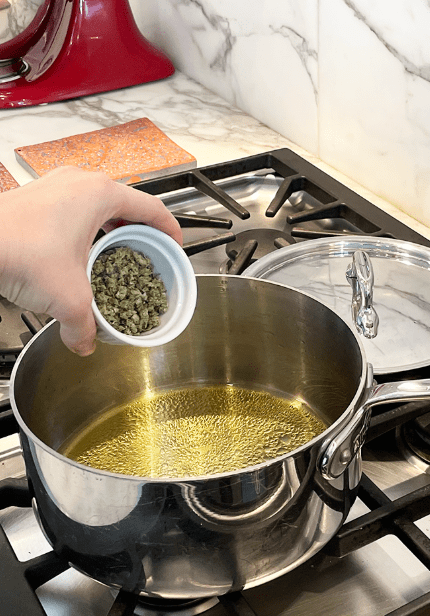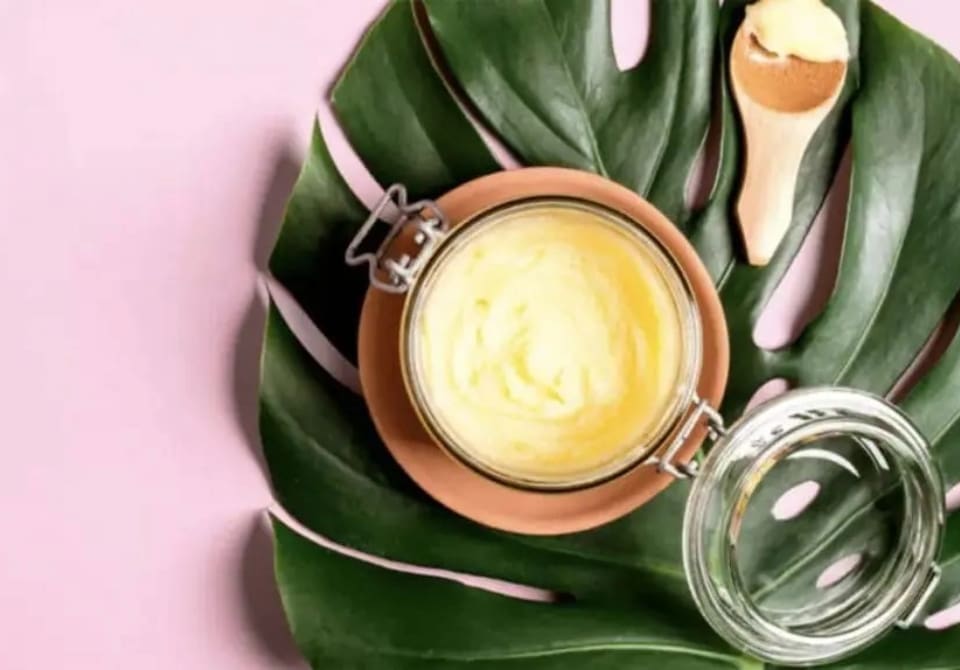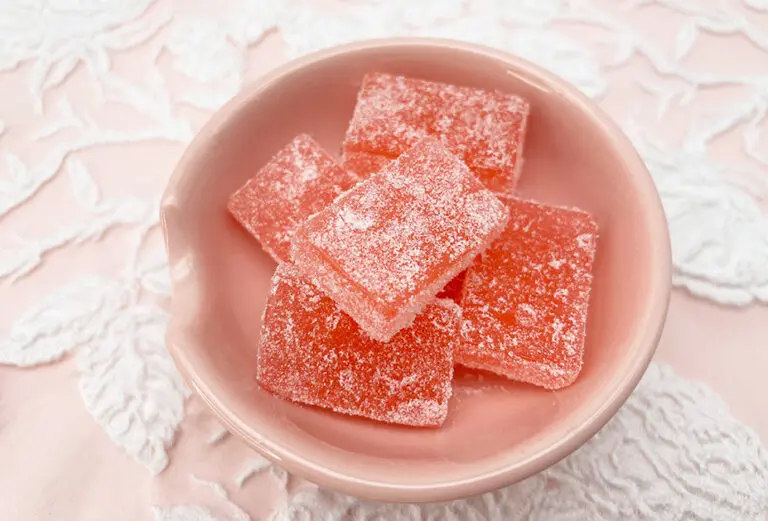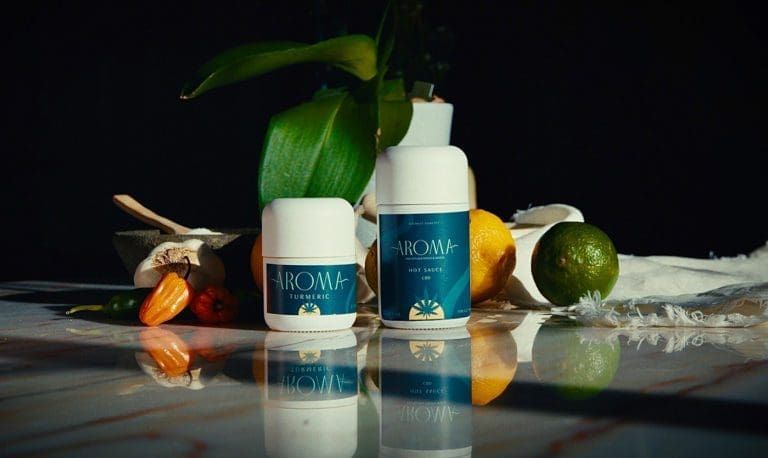Make Cannabutter in 9 Easy Steps
- Follow our simple, step-by-step directions to turn your flower into potent cannabutter.
- Don’t forget to decarb—we tell you exactly how complete this crucial step.
- Use our Simple Edible Calculator to dose every recipe just the way you want it—no matter what kind of flower you have.
7-minute read
Cannabutter (or Oil) is the Edibles OG
For those of us who love edibles, learning how to make cannabutter is a must. Here’s a step-by-step guide to make cannabutter with standard kitchen tools. If you’re serious about cooking with cannabis, you’ll want to invest in one of the fabulous cannabis infusers on the market. Both Ardent and Levo make these appliances, and both are very discreet. Levo devices also come in a gorgeous array of colors to fit in with your kitchen decor. But, before you make the investment, give this low-tech method a try.

Why You Need to Prep your Flower to Make Cannabutter
Flower can’t just go right into food. If you did cook with raw flower, your edibles wouldn’t taste very good. Worse, they wouldn’t be nearly as potent as they should be. You need to activate cannabis very precisely with heat—that’s why one of the most common ways of consuming cannabis is to smoke it. To experience the good stuff (the THC, CBD, etc.), first you need to bake your cannabis at a specific temperature for a specific time to elicit the chemical reaction that will release maximum cannabinoids. The technical term for this is decarboxylation, or decarbing—not that you need to remember that. Just follow the simple steps below and you won’t waste any of the potency of your flower.
How to Grind Cannabis for Edibles
When you’re grinding cannabis for edibles, it’s impoortant to keep your mix coarser than you would for smoking. Why? Well, the finer you grind your herb, the more challenging it becomes to strain out the plant matter later on. Cannabutter works best when it’s as clear as possible. You don’t want little bits of herb in it. Also, finely ground cannabis releases more of the plant’s chlorophyll. This pigment won’t just turn your butter green. It also has a strong taste that gives edibles a grassy flavor.
No Grinder? No Problem
Some chefs suggest just breaking buds apart with your fingers before decarbing. But that can get sticky with resin. Instead, we recommend using a scissors to cut your flower into a coarse mix. If scissors aren’t your thing, check out our other tricks for grinding weed with common kitchen tools. Use the sage in your cupboard as a rule of thumb for the consistency.
How to Activate (Decarb) Your Flower
Decarbing Instructions
Set your oven to bake, and preheat it to 220° F (104° C). Then, cut up ½ ounce of cannabis flower with scissors into a coarse mix. Next, spread your herb evenly onto your baking dish or sheet. Place it on the center rack of your oven. As you bake, gently stir/remix your flower about every 10 minutes. Bake until it turns a deep brownish green, taking care not to burn it.
Baking Times
For baking times, we defer to Mennlay Golokeh Aggrey, the cannabutter guru and author of The Art of Weed Butter. For old or low quality flower, bake about 20 minutes. If you’re using cured, high grade flower, bake about 45 minutes. And for recently harvested or wet flower, bake 60 minutes or more. But again, keep checking the color of your flower to make sure you’re not under or overcooking it.
What Are the Benefits of Making Cannabutter?
You can infuse cannabis into lots of things. The list includes butter and almost any cooking oil—olive, avocado, and our favorite, coconut oil. Cannabis can also be infused into honey, sugar, yogurt, alcohol, and, we’re sure, loads of other foods. But cannabinoids bind to fat cells. That means butter and oil are two of the most efficient delivery methods to get them into your system. Decarbing makes it easier for cannabinoids to bind to those fats, or lipids. Why is that important? Because scientific studies have consistently shown that consuming cannabis in combination with lipids greatly enhances its potential to heal.
Which Strains Are Best to Make Cannabutter With?
We like to use Blue Dream to make cannabutter. It’s a cross between Blueberry and Haze that has sweet berry and earthy aromas. This strain is known for its balanced effects that combine euphoria with full-body relaxation. What could be better than that? If you’re studying up on your terpenes, myrcene and pinene are the most dominant in Blue Dream. Other strains that are commonly recommended for cannabutter include Bubba Kush, OG Kush, Skywalker, Sour Diesel, Trainwreck, and White Widow. And if you’re wondering about potency, it doesn’t matter.
Make Cannabutter in Just a Simple Saucepan
The lowest tech way to make cannabutter is in a saucepan on your stovetop. It takes more time than other methods and there will be a telltale aroma. But you don’t need any special equipment. To get started, you’ll just need the following common kitchen tools. First, a medium saucepan with a tight fitting lid. Next, a wooden spoon and a cooking thermometer. Finally, a fine metal strainer or cheesecloth and a glass jar with a tight fitting lid.

Cannabutter Ingredients
The ingredients in cannabutter are super simple: all you need is 8 ounces of Ghee (or homemade clarified butter), 1 ½ cp water, and ⅛ oz of decarbed cannabis.
Cannabutter Instructions
To begin your cannabutter journey, start by combining Ghee and water in a saucepan over very low heat. Stir continuously until Ghee is completely melted. Once it’s melted, add the cannabis and stir until fully combined. Next, cover with lid and allow the mixture to gently simmer for 4 hours. Stir every 15 minutes to make sure your butter’s not burning. Also, regularly check to make sure its temperature stays below 180° F (82° C). This step is really important for preserving the potency because THC starts to degrade at 185° F (85° C).
Sieve the Day
After simmering, carefully pour the mixture into a sealable glass jar through a strainer, cheesecloth, or fine mesh sieve. We like to use a tea strainer since it’s specifically made for straining herbs. Keep in mind that the butter may have reduced slightly during the infusion process, so plan your batches accordingly. Once strained, you can store the infused butter in the refrigerator or freezer, where it will stay potent for up to six months.

Testing/Dosing
The Cannabuutter Math is Mathing
When you make cannabutter at home, especially via this low-tech method, it can be notoriously difficult to gauge dosing. Unless your tolerance is pretty high, you may want to consider using part cannabutter and part regular butter in most recipes. We recommend beginning with a conservative dosage of 5-10mg of THC per serving. But working out the math involved can be daunting. So, we’ve done it all for you in our Simple Edible Calculator.
A Cannabutter Calculator
This calculator can save the day. Just look up the potency of the cannabis you’ve infused into your butter. (All legally sold cannabis has a label that tells you the exact percentage of THC in it.) Then, our chart will tell you how much cannabutter to use in your recipe to get to the per serving dose you want. Keep in mind that the effects of edibles may take up to four hours to fully manifest. Therefore, if you’re new to edibles, it’s crucial to follow the age-old advice: start low and go slow. With our user-friendly calculator and a cautious approach, you’ll be well-equipped to enjoy your homemade edibles safely and responsibly.
Cannabutter recipes
Now that you’ve learned to make cannabutter, put it to great use in our recipes. For traditional sweets, try whipping up our mind-blowing molten chocolate cannabis brownies. Or, if you’re not into chocolate, try our sugar cookies, snickerdoodles, or turtle cookies all of which you can make from just one basic dough. If you’re hankering for something more savory, try Kristina’s Famous Sweet Potato Pecan Pie. We promise, you won’t regret it!






